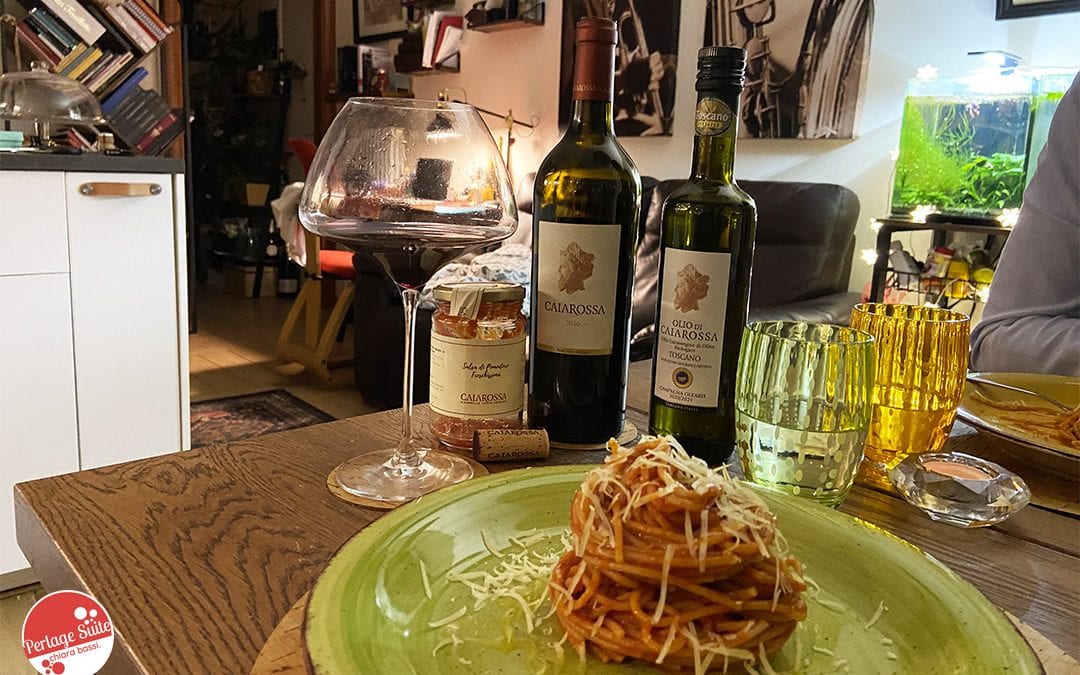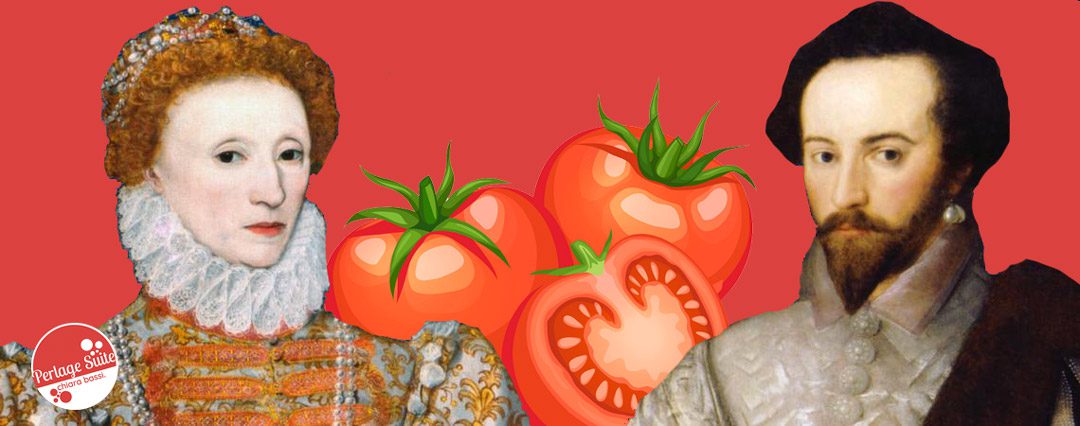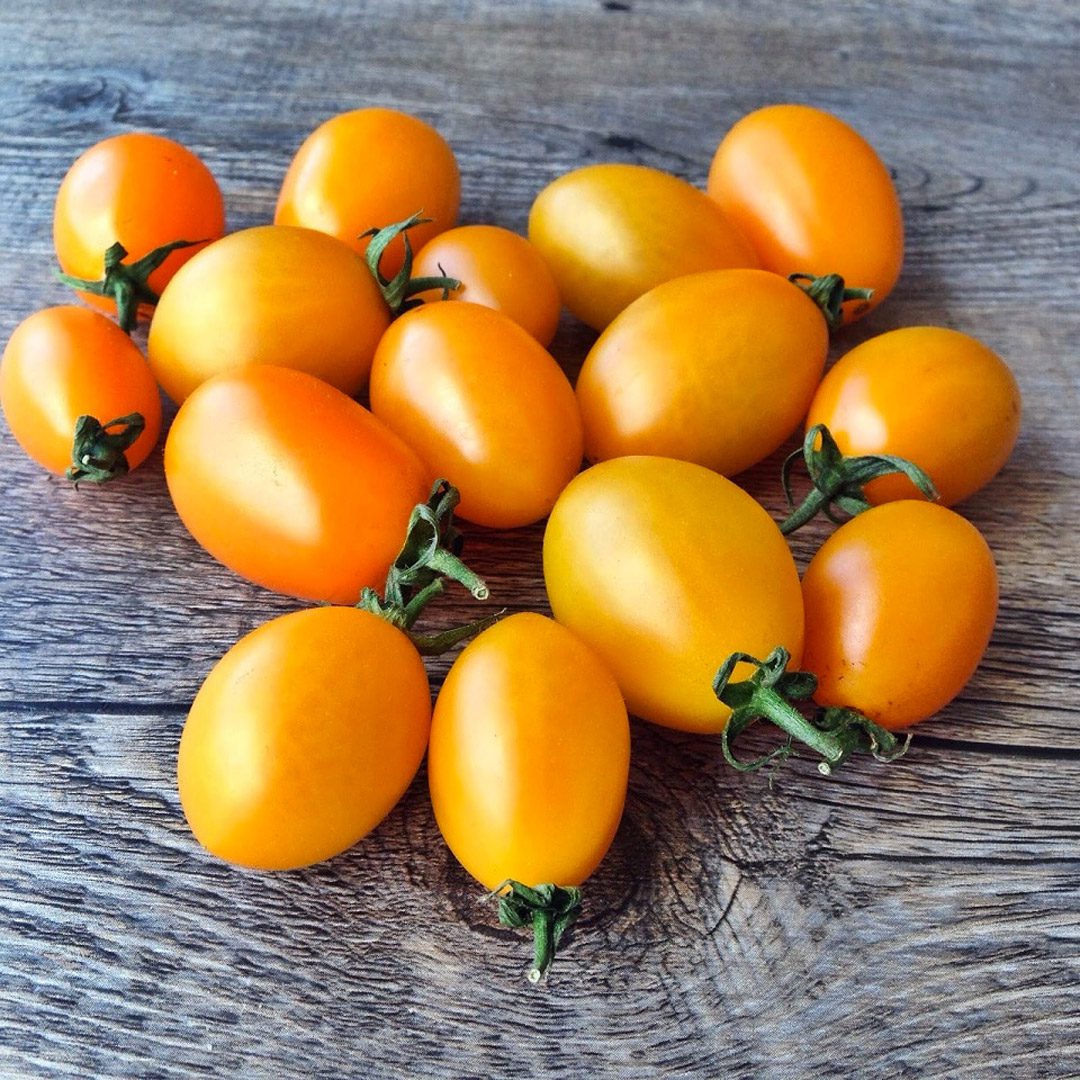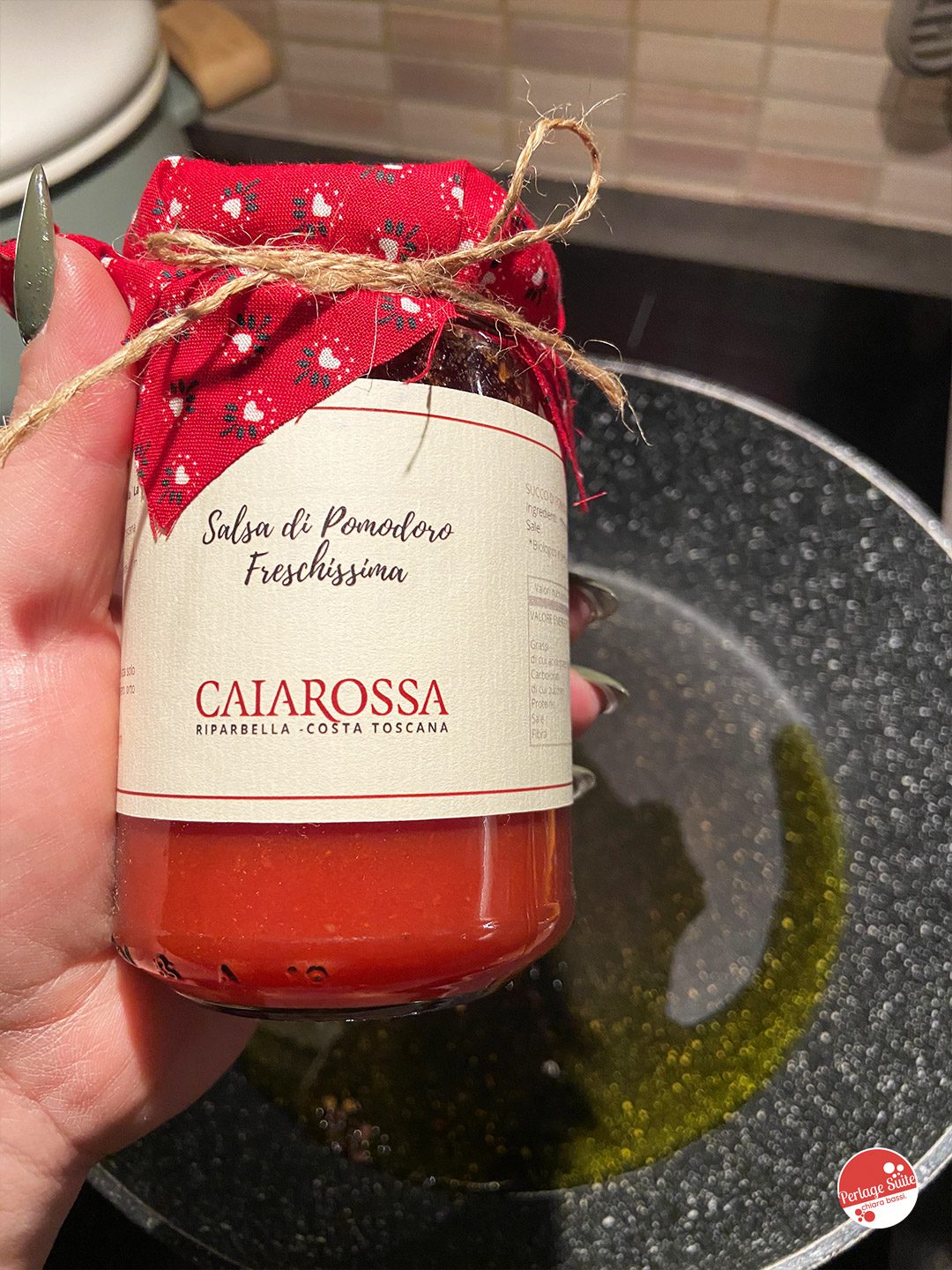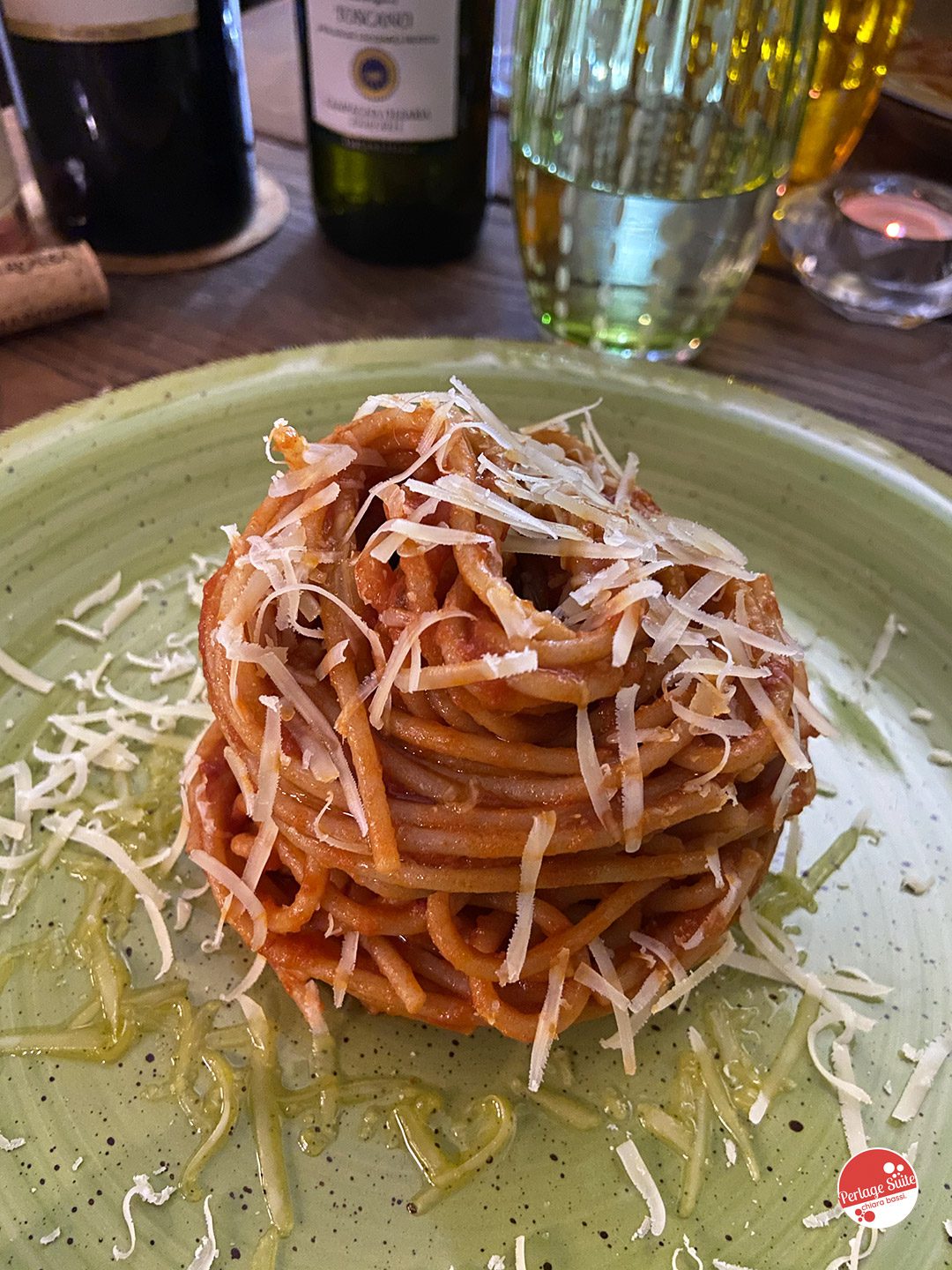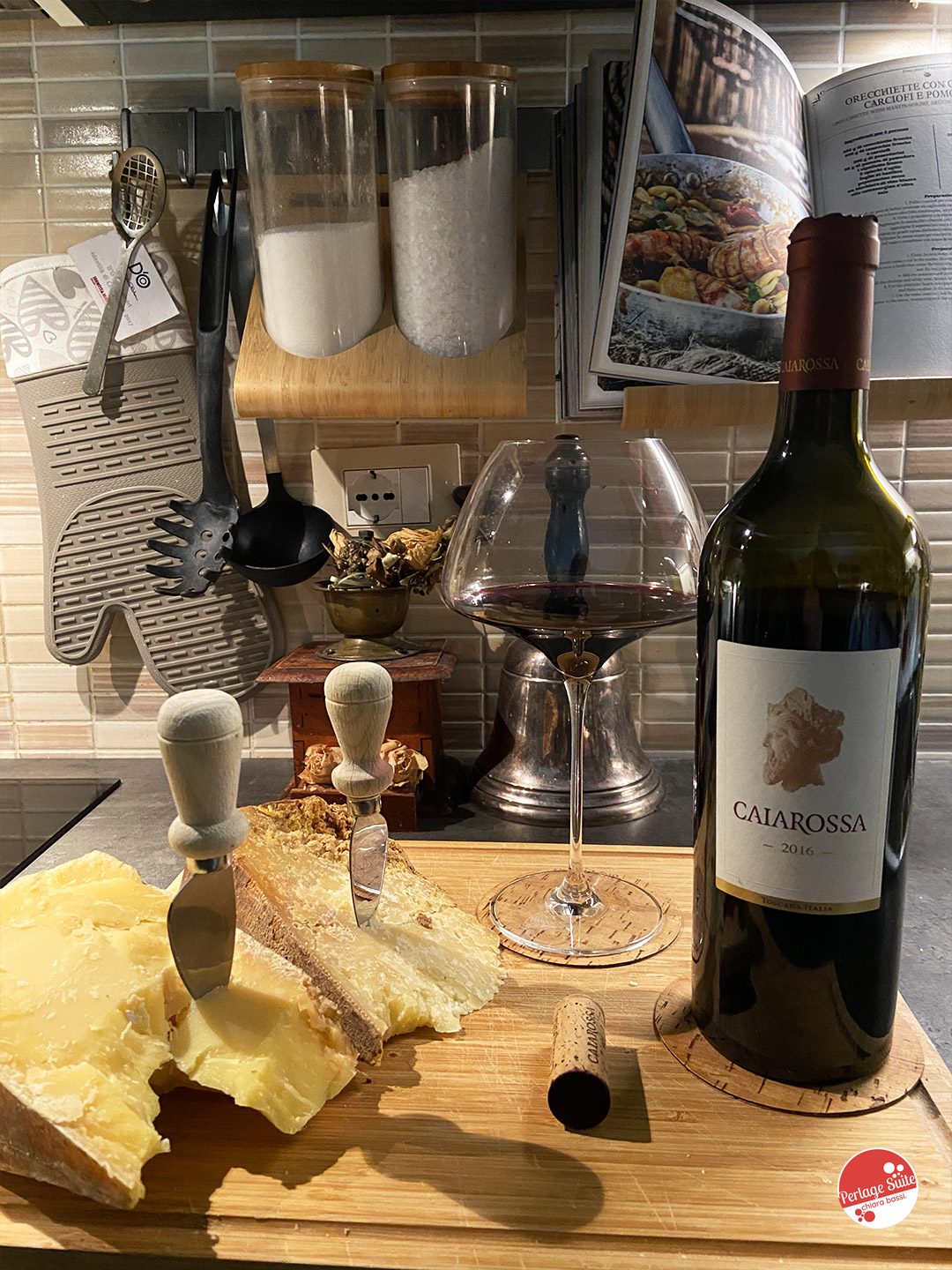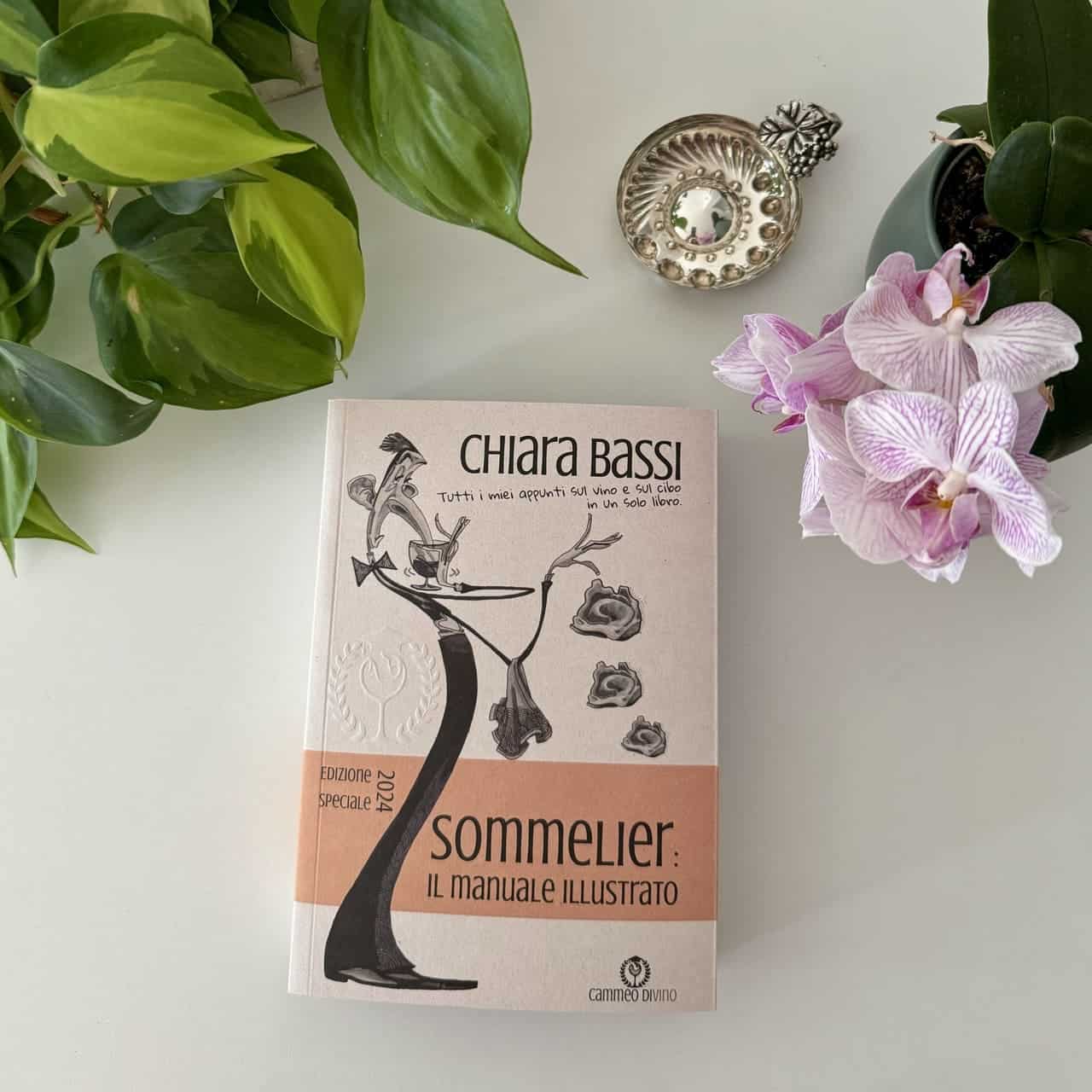On Friday afternoon I received a beautiful parcel from Tuscany from the Caiarossa winery, which contained, among other wines, a jar of very fresh tomato sauce, durum wheat spaghetti from Carlo Boni Brivio's biodynamic organic farm 'Il Cerreto', Caiarossa's extra virgin olive oil and a delightful card with the recipe by Irene. So, although I had already planned to cook something else for dinner, I decided to make just the spaghetti with tomato sauce and uncork a Tuscan wine Caiarossa 2016 (screaming) because I want to tell you something I studied at university for my History of Food and Wine exam on the tomato.
Subscribe to my newsletter or scroll down the page to continue reading the article. 😉
Tomato sauce? An aphrodisiac delicacy of Aztec cuisine.
All of us, when we think of tomato, I am sure we think of it as a symbol of Italian cuisine. In our minds, spaghetti with tomato sauce is an emblem of our tradition. Yet pasta was born and has crossed the centuries without this fruit. Just think that the tomato arrived in Europe and particularly in Italy after the discovery of America in 1492. So if we want to consider tomato sauce traditional for a people, we have to think of the Aztecs, who even considered it an aphrodisiac. So much so that Sir Robert Raleigh, English navigator and poet, lover of Queen Elizabeth I, gave her - returning from the discovery of the coast of North America, which he named Virginia in his honour - just a tomato plant laden with these red, fleshy fruits he called apples of love. This name travelled around Europe and reached France and Italy, so much so that it is still called pùma d'amùri in some parts of Sicily.
And perhaps - I speculate - it is also thanks to theopposed love story between Sir Robert Raleigh and the Virgin Queen that over the centuries red has become the colour of passion, love and danger. She, Elizabeth I, decided to remain unmarried - officially a virgin - to save her head. He, Sir Robert, was content to marry one of his ladies-in-waiting, but still lost his head after her death, when he fell into disgrace.
Tomato: from ornamental plant to gastronomic symbol
If in its land of origin in modern times it was not very successful because of its sour juice and its colour reminiscent of blood almost as a symbol of a hostile nature, in Italy its history traditionally begins in Pisa in 1548 when Cosimo de' Medici receives a basket of tomatoes. In reality it had already been in Europe for 8 years imported by the Spanish leader Hernán Cortés and had landed in Sicily - under direct Spanish rule - a few years earlier and when it was still used as a decorative plant in Tuscany, it was already cooked here. Thanks to the Spanish physician and botanist Nicolás Monardes which in his book Of things brought from the West Indies pertaining to the use of medicine (1565-1574) proposed it as a pharmacological and gastronomic plant. The pairing of pasta and tomato sauce thus began in Sicily in the late 1500s.
For many years, however, cultivation as an ornamental plant prevailed because of its often gold-coloured fruit and it was given as a gift by noblemen to their ladies. The red colouring was selected in the Nocera countryside at the turn of the 17th and 18th centuries to become the prevalent one.
The first traces of the use of tomato sauce in Italy give us chef Antonio Latini in his book 'The Modern Scalco' by 1692 where describes the recipe for Spanish-style tomato sauce widespread in Neapolitan cuisine. The biologist Lazzaro Spallanzani in 1762 instead he first noticed how tomato extract boiled and stored in a closed container remained intact for a long time defining the first conservation technique.
And so it was that the tomato moved from the women's garden to the men's field and began to be cultivated everywhere, although It was not until three centuries later, at the end of the 1800s, in the sunny Po Valley plains, that the tomato began to play a major role in the then widespread sauce cooking. We must remember that cooking was not so much a culinary procedure as a fundamental sanitising process necessary to compensate for the lack of suitable means of preservation.
Around 1850, so-called black breads were produced in the Parma countryside using sun-dried pulp. From 1865, Professor Rognoni contributed to the spread of cultivation techniques which he had personally experienced in his own pederi. Ten years later, Francesco Cirio created the first Italian canning industry dedicated specifically to tomatoes, and 30 years after that, in 1905, the Parma industry imported an apparatus for condensing tomato paste in a vacuum that literally made the Italian tomato take flight.
The pairing of pasta and tomato sauce was an invention of the Romagnolo Pellegrino Artusi, who was able to impose this recipe by the Roman cook Francesco Leonardi as the hallmark of all Italian cuisine. Francesco Leonardi published the second edition of his book Apicio Moderno in 1807, in which the recipe for pasta with tomato sauce appears for the first time. This sauce he invented was made by sautéing onions, celery and carrots in extra-virgin olive oil, then adding garlic and seedless tomatoes and simmering everything for a long time, finishing with fresh basil. In 1891, Artusi self-published Science in the Kitchen and the Art of Eating Well, a cookbook of 790 recipes mainly from central and northern regions, in which he also included Leonardi's recipe. In a short time, maccheroni al pomodoro, a name for a pasta format shaped like a long or short tube depending on how it was cut, first conquered all Italian aristocratic families, then when illiteracy decreased and prosperity increased, after World War II, all Italians.
Spaghetti with tomato sauce: the products of Caiarossa
Returning to the present day, Caiarossa has selected a special pasta producer, Il Cerreto, which uses certified biodynamic durum wheat, to give us a product made by someone who follows their own agricultural philosophy.
Caiarossa's fresh tomato sauce is made from tomatoes that grow in their synergistic garden.
The extra virgin olive oil is produced exclusively from the olives of the 1000 olive trees scattered around the Caiarossa estate. The varieties used are the classic Tuscan ones: Frantoio, Leccino and Moraiolo.
Spaghetti with tomato sauce: Irene's recipe interpreted by me
- Bring the water to the boil, add salt and pour in 250 g Il Cerreto spaghetti. Let it cook 5 minutes.
- In a non-stick frying pan, put 3 tablespoons of Caiarossa extra virgin olive oil, a pinch of salt, a few chilli flakes and a crushed clove of garlic.
- As soon as the oil is hot, pour in the entire jar of fresh tomato sauce and leave to cook over a low heat.
- Remove the spaghetti from the water directly with tongs and place them in the pan with the tomato sauce. Add a ladleful of cooking water and cook until the sauce has thickened enough and the pasta is al dente, however, for about 3 to 4 minutes over medium heat.
- With the help of a ladle and a fork, serve, creating a nest. Complete with a drizzle of Caiarossa extra virgin olive oil, a grating of cheese and a basil leaf if in season.
Caiarossa 2016
It is made from cabernet franc 42%, merlot 25%, syrah 15%, cabernet sauvignon 6%, petit verdot 6%, sangiovese 5%, alicante 1% grapes from the Podere di Serra all'Olio. The grapes are harvested by hand for about six weeks between late August and early October. Grapes are selected in three stages: in the vineyard and on the sorting belt before and after destemming. The pre-fermentative maceration lasts from 2 to 4 days, followed by maceration on the skins for a further 20-30 days depending on variety and terroir.
The alcoholic fermentation of each variety takes place separately in cement and wood vats of varying sizes, from 10 to 80 hectolitres, without the addition of selected yeasts. Pumpovers and manual cap breaking are carried out twice a day for approximately 9-12 days, then one pumpover per day until the end of maceration. Malolactic fermentation takes place in cement or wooden vats. Ageing takes place in tonneaux and new, second and third passage barriques using approximately 30% of new wood. The period varies from 11 months for the more delicate grapes, such as Alicante, up to 20 months for the more robust ones, such as Petit Verdot and Cabernet Sauvignon. It then matures a further 6 months in cement vats before bottling.
My tasting. It has an intense, impenetrable ruby red colour. The nose is complex and elegant with notes of jammy red fruits, cinnamon, cocoa, re-fermented tobacco, violets, wood. In the mouth it is soft, savoury, very fresh, balanced, but with tannin that still needs time. Structured and very long. Great potential for bottle ageing.
A pleasant discovery this Tuscan wine and I look forward to meeting them and tasting the rest of the wines as well, which I received by videoconference with their winemaker next Wednesday. These are the visits to the winery at the time of the Covid...
Cheers 🍷❤️
Chiara

